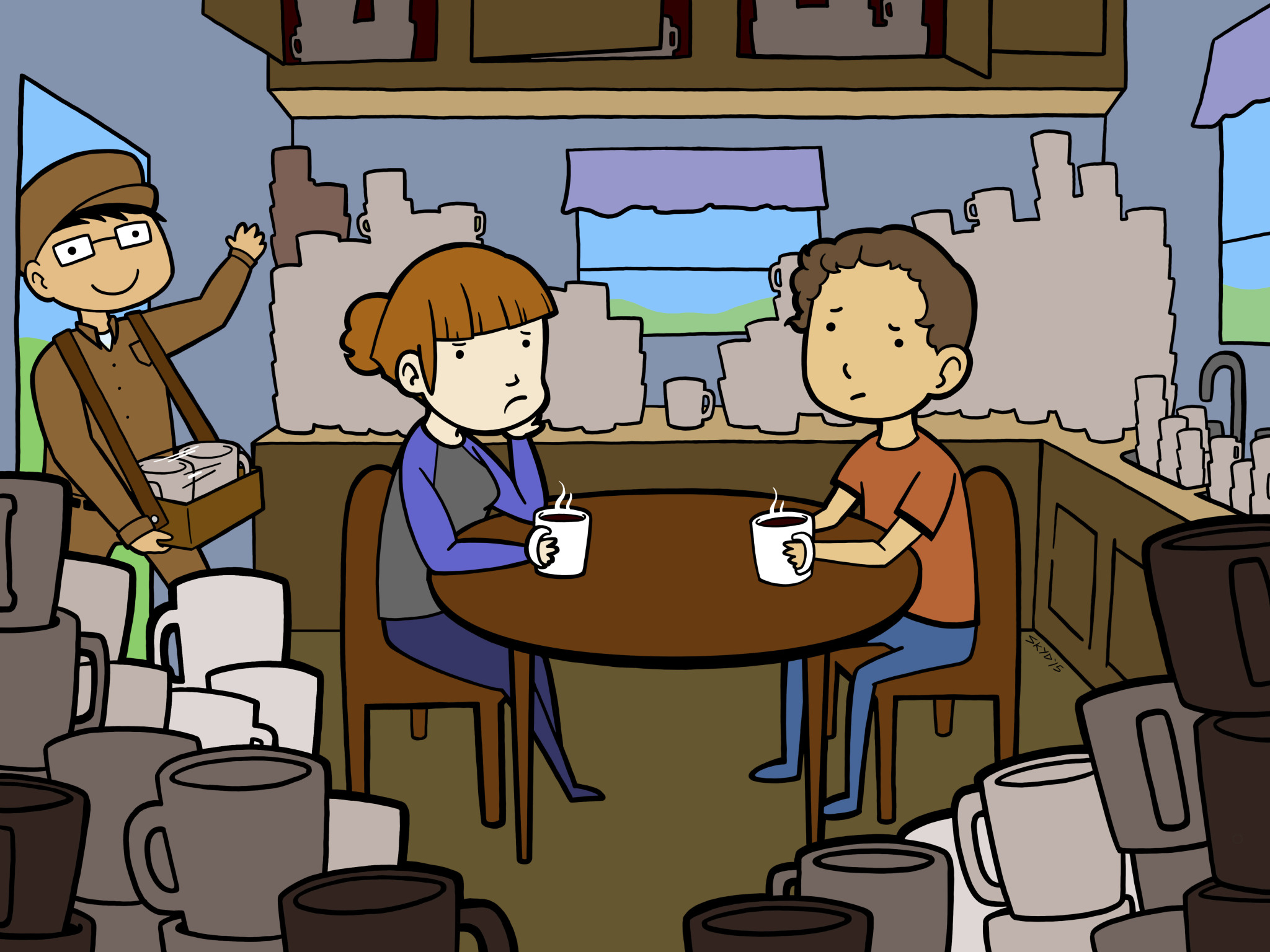Many people find the role of biofuels in managing greenhouse gases difficult to understand. It can be readily explained over a cup of coffee. Imagine a couple who enjoy cups of coffee every morning. Of course, they wash and reuse the cups.

The husband discovers that Amazon.com will deliver two new coffee cups every morning – how much more convenient than washing cups every day! Soon dirty coffee cups overflow the cupboard. The wife suggests a return to recycling but the husband argues that there is no difference between new and recycled cups, so how does reusing cups help? She explains that although the cups are identical, it matters where they come from. Cups brought into the house are responsible for the problem, not the cups they reuse.
Finally the husband agrees and the accumulation stops. But the house remains uncomfortably full of cups despite their diligent recycling. Fortunately, a neighbor stops by every week to borrow a cup of sugar, which gradually reduces the number of cups in the house, but only slowly and only as long as they reuse rather than purchase new cups every time they want coffee.
To speed up house cleaning, they hit upon a plan to return two cups to Amazon.com every morning after using them. Nevertheless, they must patiently stick to this plan if they are to regain control of their house.
In this parable, coffee is energy, cups are carbon dioxide, and the house is the atmosphere. Recycling cups is carbon neutral energy, as practiced by society before the days of fossil fuels and today to various degrees by biofuels agriculture (as long as agriculture is dependent on fossil fuels, “low carbon energy” is a better description). Buying cups is carbon positive energy, as occurs when we burn fossil fuels. The neighbor borrowing a cup of sugar is Nature slowly removing carbon from the atmosphere, but Nature cannot keep up with our burning of fossil fuels.
Sending cups back to Amazon.com to speed up house cleaning represents carbon negative energy. It requires us to remove carbon from the atmosphere and sequester at least part of it in soils, geological deposits, or the ocean. Although most people are unfamiliar with carbon negative energy, it will become increasingly important to consider as the atmosphere becomes “uncomfortably full” of carbon dioxide.
Doubts about bioenergy as a way to reduce greenhouse gases are of two kinds. The first arises when people think it doesn’t matter where carbon dioxide comes from when counting carbon. As the coffee cup parable makes clear, its origin is important.
The other doubt concerns indirect land use change, which states that growing biomass for biofuels in one part of the world will cause food shortages elsewhere. Purportedly this would encourage conversion of rainforests to agriculture with an increase in carbon dioxide emissions exceeding any savings from using biofuels.
Indirect land use change can be understood in terms of the coffee cup parable. In this case, the conjecture is that by washing and recycling cups the couple is reducing the amount of water available to the neighbors to wash their own cups, forcing the neighbors to buy new cups from Amazon.com. The result is a proliferation of coffee cups in the neighborhood.
Would this really happen? If the neighborhood is experiencing a severe and protracted water shortage, the neighbors just might resort to buying cups. But they might also conserve water in other applications, drink less coffee, or find different ways to clean their coffee cups.
Similarly, the dire outcome predicted by indirect land use change would require severe and protracted food shortages and assumes that humans only respond in one way to such a challenge – by burning down old growth forest to expand agriculture. This dismisses other strategies such as reducing food wastage, growing higher yielding crop varieties, and reducing consumption of animal protein. To date there is no experimental evidence that biofuels cause food shortages or encourages destruction of forests.
The principles of carbon management are hardly more difficult to understand than managing coffee cups in a cupboard. From these principles it is clear that bioenergy can play an important role in halting the accumulation of carbon dioxide in the atmosphere. In combination with carbon negative energy technologies, it can help accelerate a return to pre-industrialization levels of carbon dioxide. But the first step is for policy makers to understand these principles in all their simplicity.
Brown is the Anson Marston Distinguished Professor of Engineering, Gary and Donna Hoover Chair of Mechanical Engineering, and director of the Bioeconomy Institute.
This article was originally published by TheHill.com
